Rosewill Capstone-G1200 PSU Review
Why you can trust Tom's Hardware
Transient Response Tests
Advanced Transient Response Tests
For details on our transient response testing, please click here.
In these tests, we monitored the response of the PSU in two different scenarios. First, a transient load (10A at +12V, 5A at 5V, 5A at 3.3V and 0.5A at 5VSB) was applied for 200ms while the PSU was working at 20 percent of its capacity. In the second scenario, the PSU was hit by the same transient load while operating at 50 percent of its capacity. In both tests, we used our oscilloscope to measure the voltage drops caused by the transient load. The voltages should have remained within the ATX specification's regulation limits.
These tests are crucial because they simulate the transient loads a PSU is likely to handle (such as booting a RAID array or an instant 100 percent load from a gaming platform). We call these "Advanced Transient Response Tests," and they are designed to be tough to master, especially for PSUs with less than 500W of capacity.
Advanced Transient Response at 20 Percent
| Voltage | Before | After | Change | Pass/Fail |
|---|---|---|---|---|
| 12V | 12.030V | 11.955V | 0.62% | Pass |
| 5V | 5.078V | 5.000V | 1.54% | Pass |
| 3.3V | 3.358V | 3.245V | 3.37% | Pass |
| 5VSB | 5.002V | 4.957V | 0.90% | Pass |
Advanced Transient Response at 50 Percent
| Voltage | Before | After | Change | Pass/Fail |
|---|---|---|---|---|
| 12V | 11.956V | 11.880V | 0.64% | Pass |
| 5V | 5.039V | 4.962V | 1.53% | Pass |
| 3.3V | 3.319V | 3.205V | 3.43% | Pass |
| 5VSB | 4.959V | 4.912V | 0.95% | Pass |
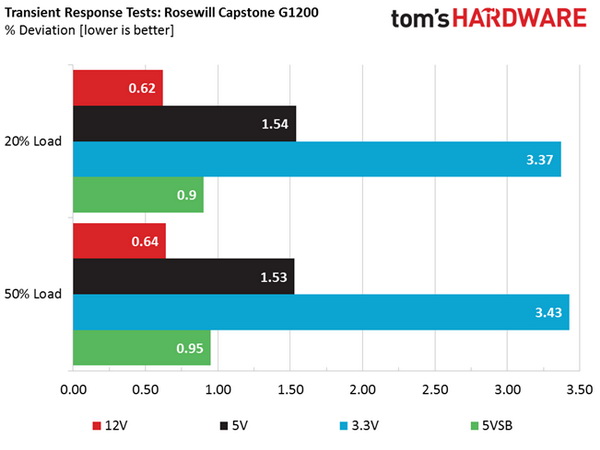
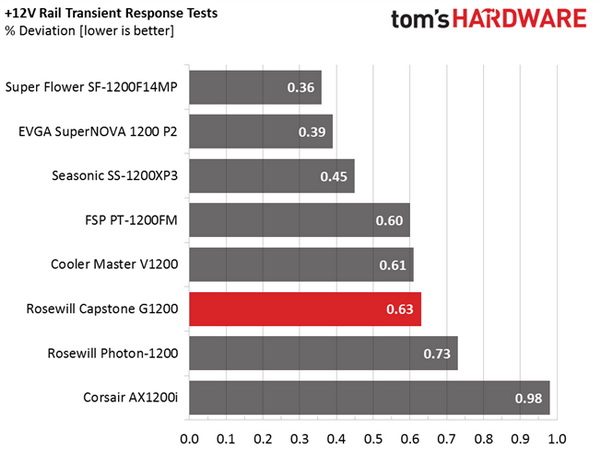
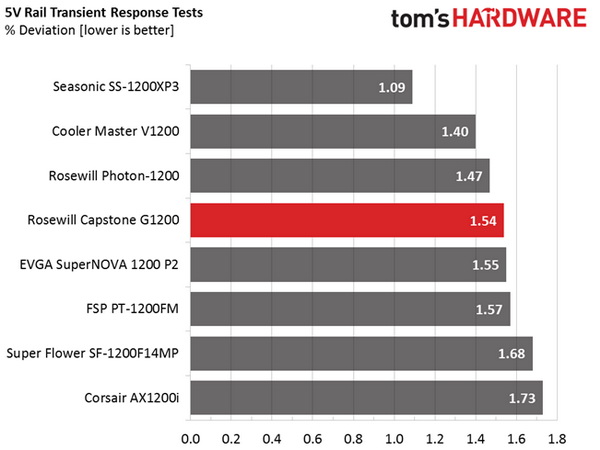
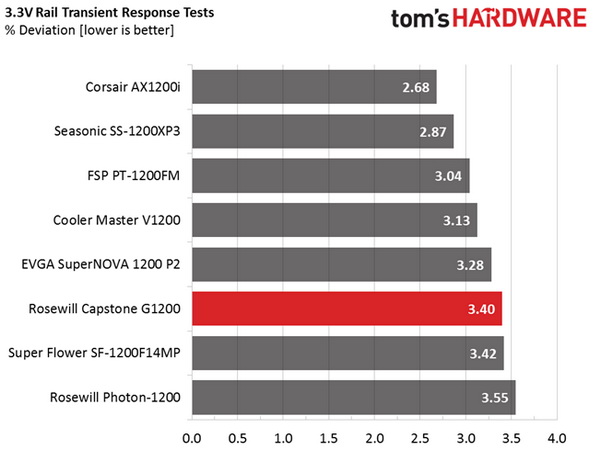
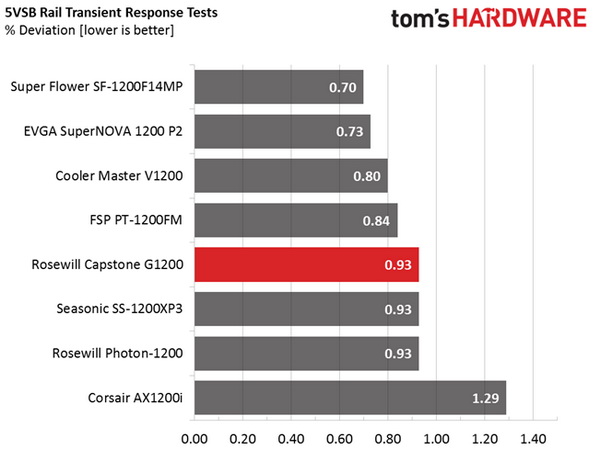
The +12V rail's performance is very good in these tests; we were also satisfied by the performance of the 5V and 5VSB rails. As usual, the 3.3V rail registered higher deviations. However, in both cases it managed to stay above 3.2V, so we aren't complaining.
Here are the oscilloscope screenshots we took during Advanced Transient Response Testing:
Transient Response At 20 Percent Load
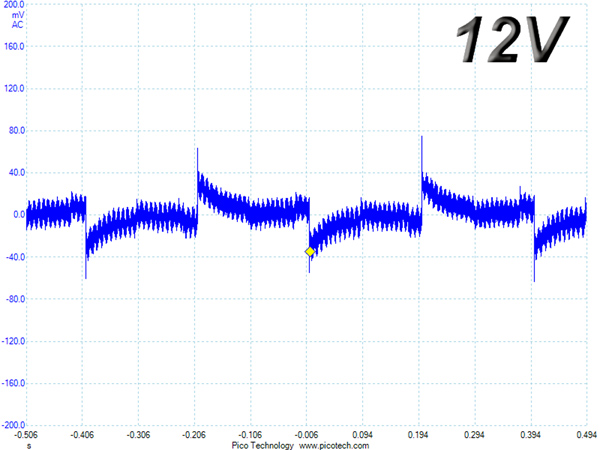
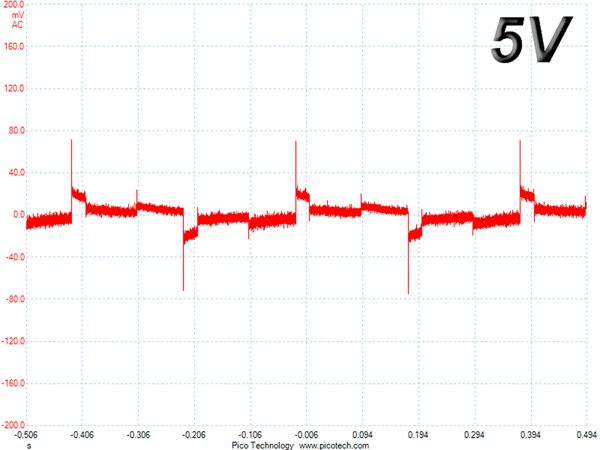
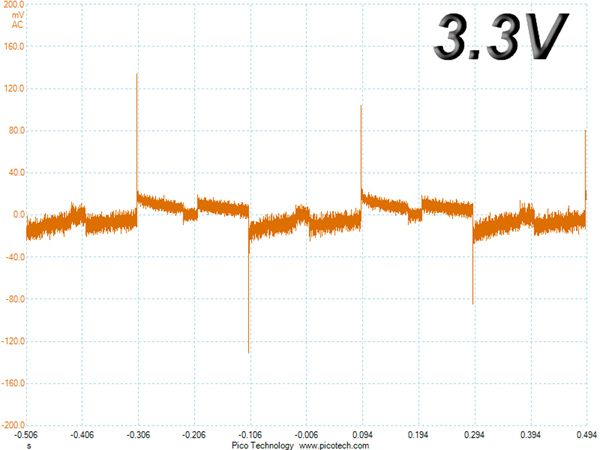
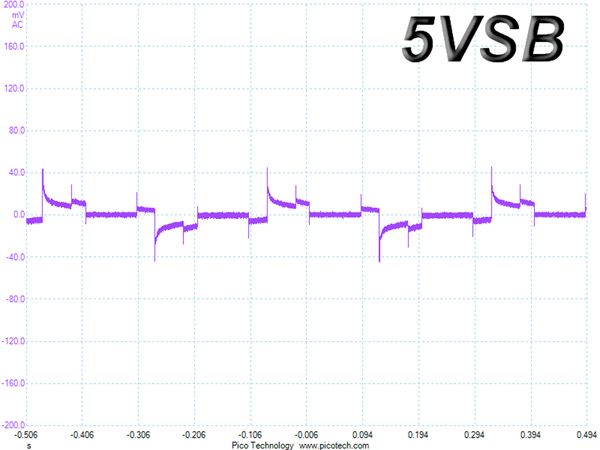
Transient Response At 50 Percent Load
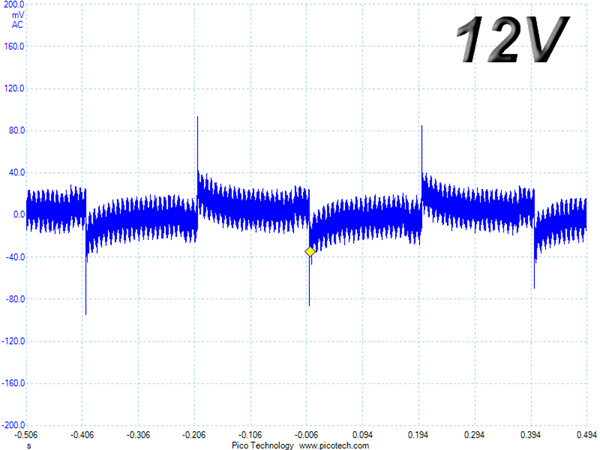
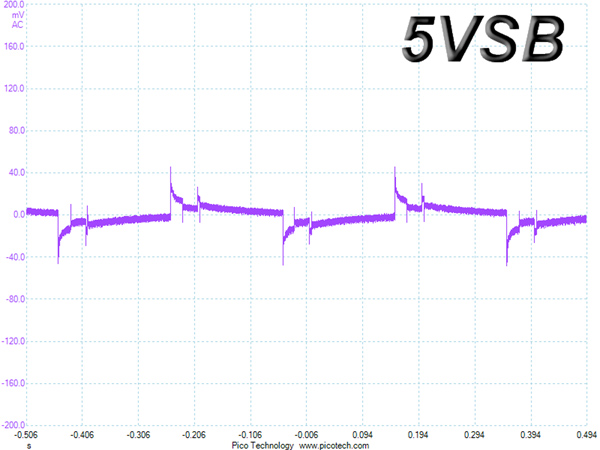
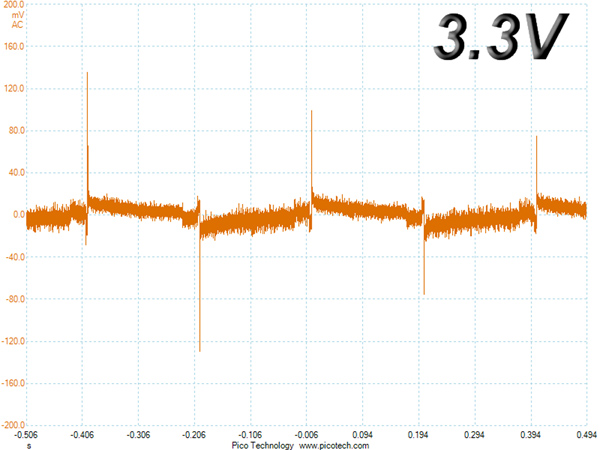
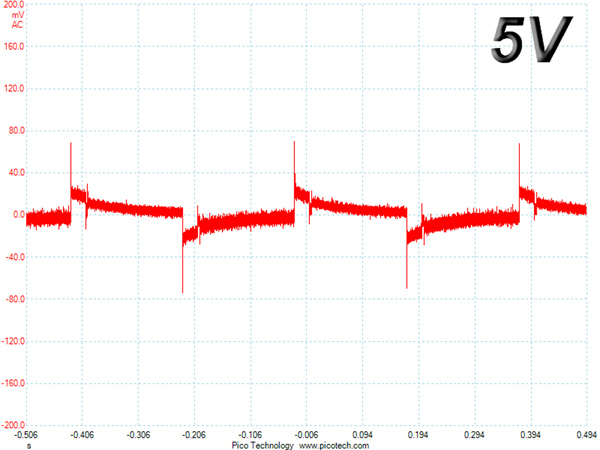
Turn-On Transient Tests
In the next set of tests, we measured the response of the PSU in simpler transient load scenarios—during the PSU's power-on phase.
For the first measurement, we turned off the PSU, dialed in the maximum current the 5VSB could output and switched the PSU on. In the second test, we dialed the maximum load the +12V could handle and started the PSU while it was in standby mode. In the last test, while the PSU was completely switched off (we cut off the power or switched off the PSU by flipping its on/off switch), we dialed the maximum load the +12V rail could handle before switching on the PSU from the loader and restoring the power. The ATX specification states that recorded spikes on all rails should not exceed 10 percent of their nominal values (+10 percent for 12V is 13.2V, and 5.5V for 5V).
Get Tom's Hardware's best news and in-depth reviews, straight to your inbox.
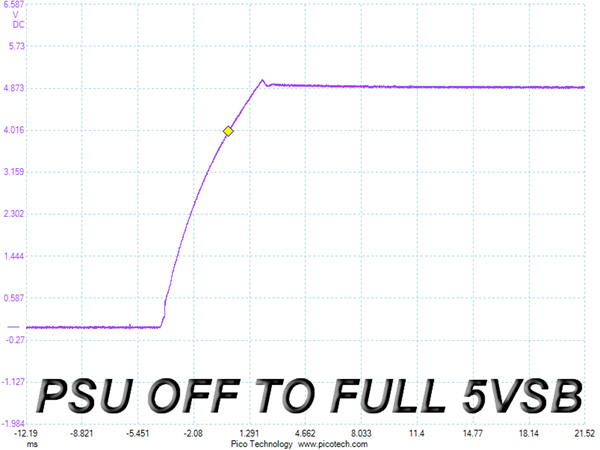
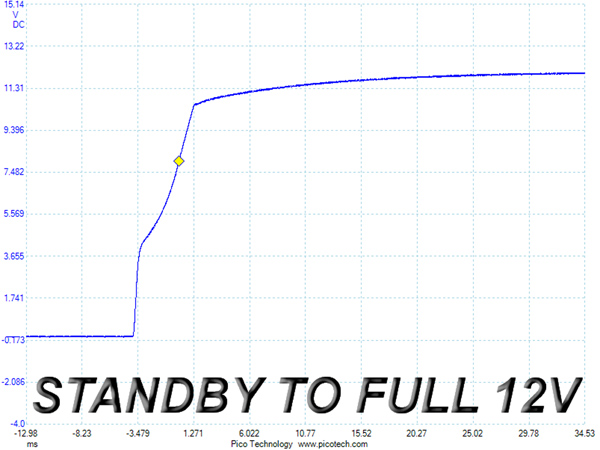
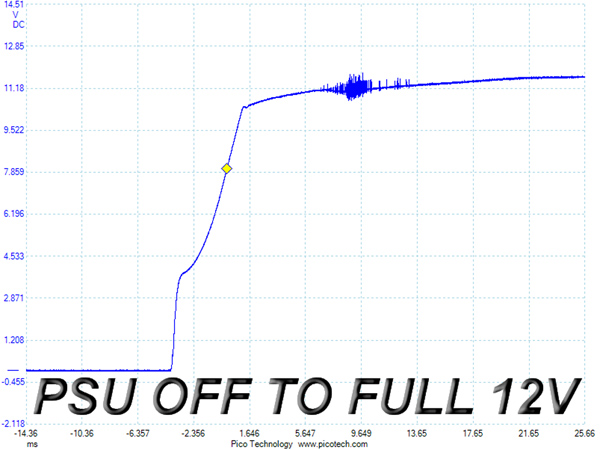
Our scope caught a small spike at 5VSB, though it's nothing to worry about. In the second test, we didn't see any spikes or voltage overshoots. All of that changed during the last test though, where ripple suppression briefly went out of control. More than likely, this has to do with the ACRF topology. We must stress that even short periods of increased ripple can apply huge stress to system components.
Current page: Transient Response Tests
Prev Page Cross-Load Tests And Infrared Images Next Page Ripple Measurements
Aris Mpitziopoulos is a contributing editor at Tom's Hardware, covering PSUs.
-
Giannis Karagiannis Quite low price for a 1200W unit but considering everything else I dont think its a good buy. Try better next time Rosewill...Reply -
Dark Lord of Tech Rosewill does have some Capstones that are great quality , The Super Flower models.Reply -
Dark Lord of Tech Also Enhance released a lot of nice V and VS series models for Cooler Master.Reply -
Aris_Mp Those older Capstones are EOL because they were older platforms which most likely aren't produced any more and on top of that Super Flower lately cannot meet demand, as the rumors say.Reply -
Dark Lord of Tech Super Flower is still pushing out a lot of units , I own 5 of he EVGA Super Flowers.Reply
The olser Capstones are solid , they are EOL , but were very good. -
DSzymborski Really disappointing to see Rosewill slide back - those older Capstones made by Super Flower were really quite nice and you could frequently get excellent deals on them and I made a couple of builds for people with the semi-modular gold 750s. Too bad.Reply -
MasterMace It's too bad, the previous Capstones were so nice. This makes me wonder if they should have slapped a lower rating on this unit, instead of overshooting for a Gold 1200Reply -
firefoxx04 I wish manufacturers didn't bother making crap power supplies for enthusiasts markets. The fact that they even sell is a huge problem.Reply -
Slobodan-888 LOL, ripple is fine. It is within ATX specifications which states that is is allowed up to 120 mVpp RMS on 12 V rail.Reply